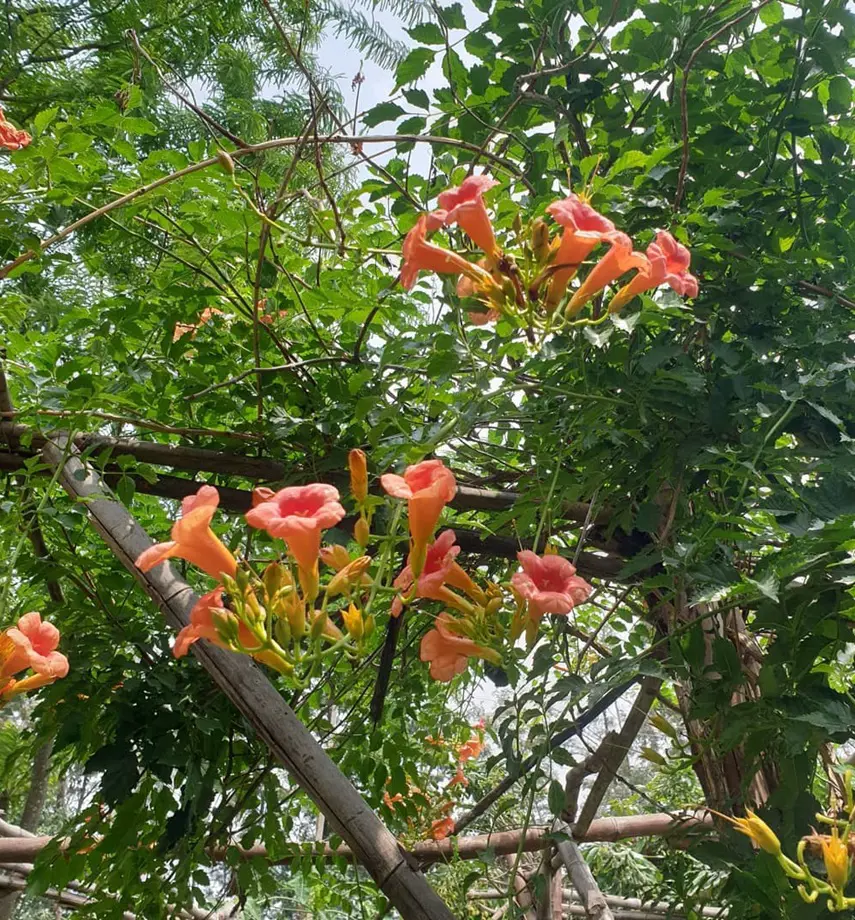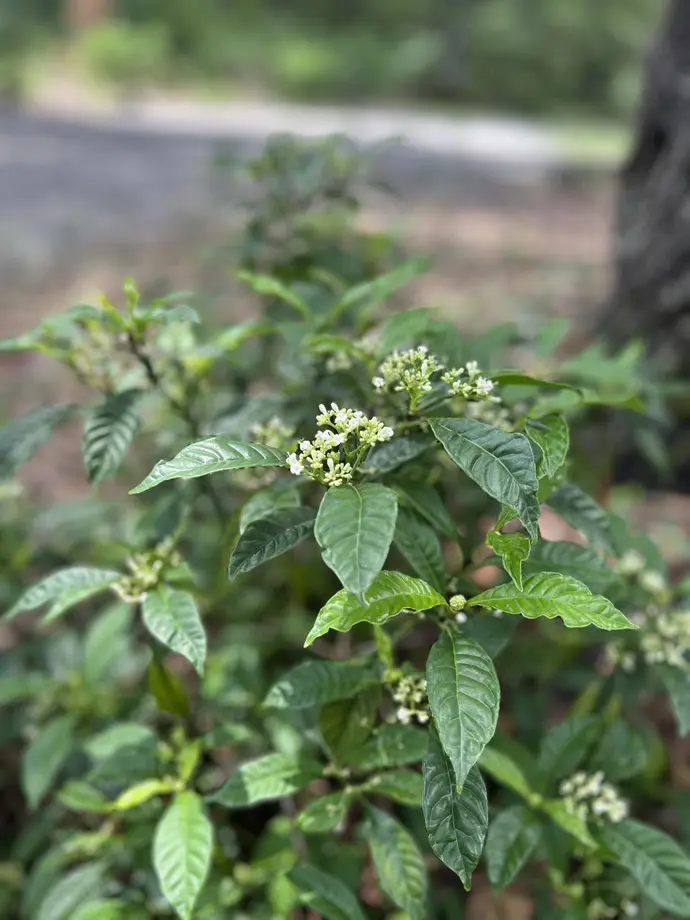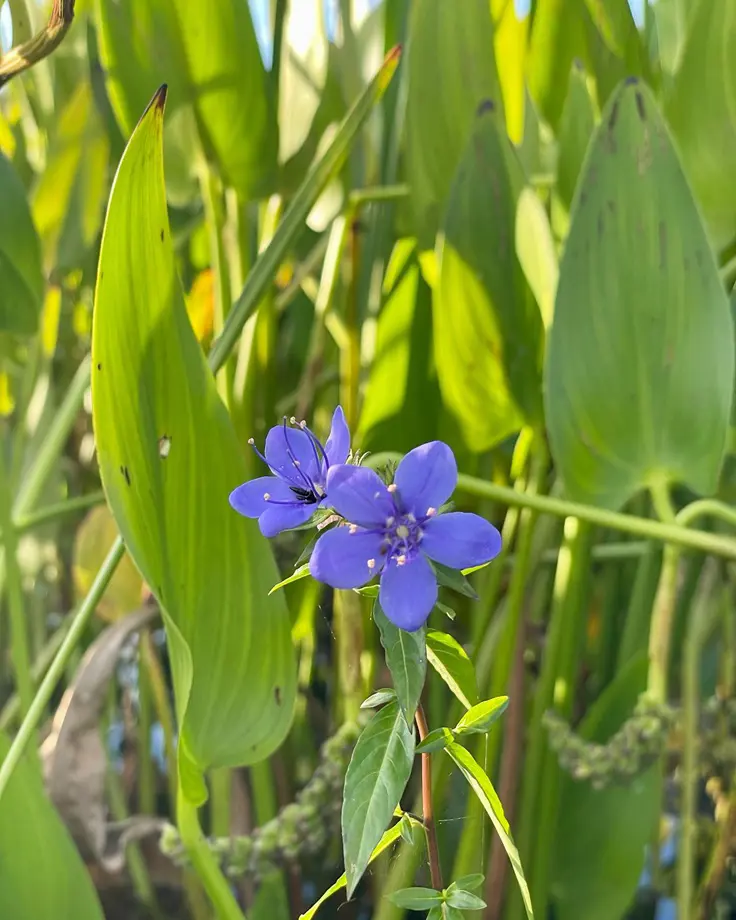20 Best Plants To Grow In Florida

This post may contain affiliate links. If you make a purchase through links on our site, we may earn a commission.
Florida's unique climate plays a significant role in plant selection, as its long summers, high humidity, and warm nights can impact a plant's ability to thrive. The USDA has designated four hardiness zones in Florida-8, 9, 10, and 11-based on which gardeners should be choosing plants to grow.
While many plants can survive Florida's weather, it's important to get the right plants that have reduced stress to high humidity and heat. Despite these challenges, Florida still has a wide variety of plant choices, that would let you create diverse, beautiful landscapes in the state.
1. Rudbeckia

Growing Conditions: grows best in full sun, Hardiness zones: 8A to 11
Special Characteristics: used to produce yellow and green dyes, treat ailments, used to treat children suffering from worms
Rudbeckia, commonly known as black-eyed Susan, includes the variety Rudbeckia hirta var. floridana, which is native to Florida. The plant features flower heads with yellowish-orange rays and a dark brown spherical center.
Black-eyed Susans are typically biennial. While not of significant value for livestock, they are highly beneficial for pollinators, attracting bees, butterflies, and other insects. To plant, use a small seed or wildflower seed box, or opt for broadcast seeding.
To encourage more blooming, it is recommended to clip wilted blooms regularly. This plant is a great addition to gardens or natural landscapes, providing vibrant color and supporting local wildlife. Their easy propagation and appeal to pollinators make them a favorite for many.
2. Cross Vine

Growing Conditions: grows best in full sun, Hardiness zone: 5 to 9
Special Characteristics: spreads aggressively, used for health ailments, has unique leaves that give them ornamental value
Crossvine is a native vine known for its vigorous growth pattern. You can plant it to cover fences, arbors, or walls. It is preferred and recommended over non-native vines because of its ornamental value as well as the food source it provides, the nectar of the flowers supports local wildlife, particularly hummingbirds and butterflies.
The plant's leaves range in color, changing as the season progresses, from green to reddish-purple. Also, the plant has a distinctive cross-shaped pith in its stem, which adds to its unique appearance.
The only problematic thing about the plant is its invasive nature, which if not taken care of can cover undesignated areas. For propagation, seeds or cuttings are the best option, and with proper care, they can be a beautiful, low-maintenance addition to gardens and landscapes.
3. Beach Sunflower

Growing Conditions: grow in sandy soils, prefers direct sun, Hardiness zone: 8 to 11
Special Characteristics: drought tolerant, self-seeder
The beach sunflower is also called the Eastern dune sunflower. It is generally a perennial wildflower that typically grows 18-24 inches tall. This hardy plant is known for its bright yellow flowers, similar to other members of the Aster family.
It self-seeds and sprouts seasonally, making it a reliable choice for naturalizing in gardens or landscapes. In areas where winters freeze, it acts as an annual.
Beach sunflower thrives best in sandy soils and is ideal for planting in large areas. However, in smaller spaces, thinning may be necessary to prevent overcrowding.
The plant can be propagated using herbaceous or softwood cuttings, ensuring new growth and helping maintain its presence in gardens. It’s an excellent choice for attracting pollinators and adding vibrant color to coastal or sandy environments.
4. Seaside Goldenrod

Growing Conditions: best in areas with full sunlight, Hardiness zone 3 to 10
Special Characteristics: late-flowering plant, salinity tolerant
Seaside goldenrod, also known as salt-marsh goldenrod, is a short-day perennial that blooms from August through October. It produces clustered spikes of bright yellow flowers.
With slightly succulent leaves, it thrives in coastal and salt-prone environments. This plant is an important food and shelter source for Monarch butterflies, making it a valuable addition to butterfly gardens.
Seaside goldenrod is well-suited for blowouts, grasslands, and transition areas. It can be easily propagated through seeds, making it a practical choice for late-blooming perennials.
5. Trumpet Creeper

Growing Conditions: blooms best in areas with full sunlight, Hardiness zone: 4 to 10
Special Characteristics: invasive growth pattern
The trumpet creeper plant has showy, trumpet-shaped flowers that are known to produce nectar in a high amount. This fast-growing vine is commonly used to cover fences, arbors, and walls as it can grow vigorously, almost up to 30 feet.
Its rampant growth can overwhelm nearby plants and structures, demanding regular management. Trumpet creeper is typically propagated by cuttings, hence making it easy to easily expand its presence. To make it a beautiful and functional addition to gardens, all you need is proper care and containment.
6. Yellowtop

Growing Conditions: full sunlight, Hardiness zone: 9 to 11
Special Characteristics: loves moisture, reseeds
Yellowtop is a Florida native wildflower loved for its mounding growth habit and vibrant yellow flowers. It blooms profusely in fall and winter, producing hundreds of small yellow flowers that make gardens look lovely.
This perennial is low-growing and very hardy, making it a great addition to any garden setting. Yellowtop tolerates moderate salinity, which makes it suitable for coastal or salt-prone areas, but it doesn’t thrive in dry conditions.
It reseeds itself, ensuring its presence in the garden year after year. For optimal growth, it’s best to cut the plant back after the flowering period.
7. Two-wing Silverbell

Growing Conditions: full sun, Hardiness zone: 5 to 8
Special Characteristics: has white showy flowers, requires pruning
Two-winged silverbell, also known as the snowdrop tree, is a small tree that forms a rounded silhouette when mature, thriving in full sun. Although it is little known, it is highly valued for its elegant, showy, bell-shaped white flowers that bloom in spring.
The tree gets its name from the two-winged drupes that appear within the flowers. These unique features make it an attractive addition to create a focal point in landscapes.
8. Flowering Dogwood

Growing Conditions: partial or full sun, Hardiness zones: 5 to 9
Special Characteristics: fruit is poisonous to humans, bark was used as medicine traditionally, can't tolerate severe drought
Flowering dogwood is a popular choice for landscape and street plantings, which with its beautiful blossoms and colorful fall foliage can create a vibrant display.
Its small flowers come in varieties of shades like white, pink and red. The tree’s leaves decompose quickly, making it good for the soil nearby. Its seeds are foods for various birds and woods are valuable in manufacturing.
The plant can be propagated by hand-sowing seeds, and also through cuttings, grafting, layering, and root division. After planting, the tree requires proper watering to ensure healthy growth.
9. Wild Coffee

Growing Conditions: prefers shade, Hardiness zones: 9 to 11
Special Characteristics: low-maintenance, susceptible to fungus, makes food for Florida's state bird Northern Mockingbird
Wild coffee is a perennial shrub native to nearly 35 Florida counties. This shrub provides cover and food (small, dark red fruits) for butterflies and the Northern Mockingbird, Florida's state bird.
Wild coffee is typically propagated by planting seeds, and it reseeds naturally, making it ideal for mass plantings. Its attractive foliage and compact growth make it well-suited for use in hedge plantings, as well as larger landscape areas.
10. Sweet Pepperbush

Growing Conditions: shade tolerant, Hardiness zones: 4 to 9
Special Characteristics: roots provide erosion control, creates fire hazard if build up, attracts polinators
Sweet pepperbush is a large deciduous shrub valued for its attractive foliage and fragrant flowers. The coastal sweet pepperbush, in particular, is popular for its striking blooms and leaves.
This shrub is best to add beauty to mixed shrub hedges or borders, where regular pruning is important to maintain its shape. Moist, well-drained soil is all they need to thrive in these areas.
For propagation of sweet pepperbush, you can use seeds, summer cuttings, or sucker division.
11. Saw Palmetto

Growing Conditions: grows best in full sun, Hardiness zones: 8 to 11
Special Characteristics: thrives in fire-prone environment
Saw palmetto is a member of the palm family with a shrubby growth habit. With the proper height, it can be the perfect choice to add a decorative touch to gardens. It thrives in high-heat regions, particularly in Florida, and is well-suited to the state's climate.
This hardy plant produces between one and five inflorescences, each bearing small, cream-colored, and fragrant flowers. These plants are grown from seeds collected directly from the plant and are commercially available in nurseries.
12. Sparkleberry

Growing Conditions: grows in any kind of sunlight, Hardiness zones: 6 to 9b
Special Characteristics: adaptable to a wide range of soil
Sparkleberry is a captivating hybrid deciduous shrub, that comes with long-lasting red winter berries. It typically grows up to 12 feet tall and produces small, white flowers in spring. What makes it visually appealing is not flowers but fruits which are even more abundant in the presence of pollinators.
Sparkleberry is especially valued for its striking winter display and its ability to thrive in mass plantings and large landscapes. It is a great addition to naturalized gardens or areas where a splash of color is needed in the colder months. With proper care, it thrives in a range of conditions, making it a versatile and attractive option for landscape design.
13. Rusty Blackhaw

Growing Conditions: full sun or partial shade, 5B through 9
Special Characteristics: resistant to pests, high drought tolerance
Rusty Blackhaw is a shrub or small tree native to North America, capable of reaching up to 25 feet in height. It features dark, textured bark and produces small, white blooms in the spring. The plant produces dark-blueish berries which are food for birds.
In the fall, the plant seems even more striking due to the vibrant hues of scarlet red and purple that develop in its leaves. This feature makes it a standout in autumn gardens. This plant is valued for its showy fall foliage and its ability to thrive in a variety of conditions.
14. Feay’s palafoxia

Growing Conditions: full sun or partial shade, Hardiness zones: 9A to 11
Special Characteristics: has a distinctive appearance, endemic in Florida
Feay's palafoxia is a unique wildflower and a member of the Aster family, found only in Florida’s central and southern peninsula. This perennial plant is a valuable food source for various butterflies and bees.
The flower structure is distinct, with no ray florets, unlike many other asters. Instead, it features tubular disk florets that are white to pinkish in color, with curved maroon-colored stigmas. The white styles extend from the ends of each disk floret, making its appearance striking. The plant’s leaves have a rough texture.
Feay’s palafoxia typically grows in sandy, well-drained soils and is adapted to its native Florida habitats. This wildflower is propagated from seeds.
15. Blanket Flower

Growing Conditions: sunny, well-drained soil, drought tolerant, Hardiness zones: 3 to 10
Special Characteristics: used as medicine, an important member of northern grassland ecosystems
Blanket flower is a herbaceous perennial forb in the Asteraceae family. It has an attractive ornamental wildflower that produces solitary flower heads, typically with vibrant red, yellow, or orange petals.
The plant serves as a low-maintenance addition to gardens, providing both vegetative cover and a food source for pollinators and wildlife. Also, its nectar can attract a large number of pollinators. While it is relatively easy to grow, it may become invasive in some areas
Blanket flowers can be propagated from seeds (the fun fact here is one flower produces only one seed) or by dividing its vegetative parts.
16. Skyflower

Growing Conditions: grows best in full sun, Hardiness zones: 9 to 11
Special Characteristics: wetland plant, dies in cool weather and grows back in spring\
Skyflower is a native wetland plant found throughout Florida. The characteristic feature of this plant is its vibrant blue flowers, that often is in clusters. The color gets even more beautiful with striking orange pollen.
As a herbaceous perennial, Skyflower typically grows to about 3 feet in height and blooms from late spring through early fall. It thrives in marshes, wetlands, ditches, lakes, or ponds, a perfect choice if your home is near water sources.
Skyflowers attract pollinators, including bees and butterflies. With its bold flowers and adaptability to wet conditions, it’s a perfect addition to wetland or water garden areas.
17. Stokes Aster

Growing Conditions: best in partially sunny areas, Hardiness zones: 5 to 9
Special Characteristics: highly drought tolerant
Stokes Aster is a perennial, evergreen flower native to Florida, known for its striking blooms that attract butterflies.
It is well-suited for mass planting, specimen gardens, borders, and as an accent plant. The plant spreads 12 to 18 inches and can create magic with its vibrant, daisy-like flowers in shades of blue, purple, or white in the planted areas. For getting the best of the blooms, deadheading is recommended.
Wet soil during winter is what causes harm to these species a lot. Otherwise, it is resistant to most pests. Its ability to attract pollinators and add color makes it an excellent choice for both ornamental and wildlife-friendly landscapes in Florida.
18. Salvia

Growing Conditions: grows best in full sun, Hardiness zones: 3 to 9
Special Characteristics: grows on dry slopes, woody plant
Salvia is a member of the mint family. This perennial shrub can grow up to a height of 20 to 80 cm. It is a woody plant, and what's fascinating is its leaves, that remain through the winter months.
The plant produces broad, purple flower bracts that can attract pollinators. Each flower produces four seeds, ensuring the plant's propagation. Salvia can be propagated by seed or by transplanting seedlings. Its resilience, attractive flowers, and ability to thrive are what makes it best suited for a variety of landscapes.
19. Yellow Pitcherplant

Growing Conditions: grows best in full sun, Hardiness zones: 6 to 10
Special Characteristics: found in wetlands, traps insects for food, fragrant and showy
The Yellow Pitcherplant, often known as the trumpet plant, is one of the tallest pitcher plants. The pitcher is actually leaves that are modified into hollow, trumpet-shaped structures that trap and digest insects, making it a carnivorous plant.
The plant produces simple, nodding flowers that are typically large and yellow and bloom from April to May. These flowers stand in contrast to the plant’s insect-catching leaves.
The Yellow Pitcherplant is native to wetland areas and grows best in acidic, nutrient-poor soils. They survive on insects which makes them best fitted in nutrient-deficient soils.
20. Beautyberry

Growing Conditions: full/partial sunlight, Hardiness zones 7, 8, 9, 10
Special Characteristics: has medicinal value, can attract pollinators, found in woods, very tolerant to fire
Beautyberry, also known as French mulberry or sourbush, is a plant with a range of medicinal purposes, particularly for treating malarial fevers and rheumatism. Its berries are an important ecological resource as they serve as food for more than forty species of songbirds.
You can easily buy these plants from commercial sources and propagate them by transplanting volunteer plants, taking softwood cuttings, or growing from seeds. Its vibrant, attractive berries, typically purple or white, not only provide nourishment for wildlife but also have been introduced in the culinary world to make jams, jellies, and syrups.
Beautyberry thrives in various climates, often planted in gardens or landscapes for its aesthetic appeal and its ability to attract birds.
Beyond its ornamental and ecological value, beautyberry’s medicinal properties are still recognized in traditional practices. Its easy propagation methods make it a popular choice for gardeners and those seeking to cultivate a versatile plant with both functional and ornamental benefits.
Recent posts
Lifestyle
Lifestyle
20+ At Home Remedies For Nausea
Nausea can affect any of us, any time of the day. Though nausea has unexpected timing, fortunately, there are several natural and simple home remedies that are effective in healing the discomfort. From foods that help calm the stomach to breathing te...
Lifestyle
How to Get Rid of Neck Pain: 10 Home Remedies To Fix Stiff Neck
Neck pain is a common issue of today, affecting more than one-third population of the US. The common causes that often lead to stiff neck include sleeping in an awkward position that involves straining of the neck, sitting in a bad posture for long p...
Lifestyle
10 Home Remedies For Loose Motion and Diarrhea
When in tough times, due to issues like loose motion or diarrhea, it would be reassuring for you to know that there are remedies, that also in your own pantry! Whatever the cause may be, be it an infection, food intolerance, or stress, these ingredie...
Lifestyle
How To Eat A Star Fruit
Star fruit is a tropical fruit known for its unique star-like appearance. The fruit can be enjoyed simply, on its own or by adding it on recipes where its extra burst of color and sweet-tart taste can blend well with other ingredients. Whichever way ...
Lifestyle
Is Yogurt Good For You?
Yogurt is a dairy product, a nutrient-packed food. It is often hailed as a health food and there are good reasons for this. If we look into the nutrients present in yogurt; it has numerous of them essential for functioning of our body. In this articl...
Lifestyle
Is Vegan Diet Actually Healthy?
A vegan diet is considered healthy but not most of the time. As all vegan foods have many beneficial nutrients, they also lack some which often sparks the debate. Without animal products, a vegan diet can be believed to have significant health benefi...





